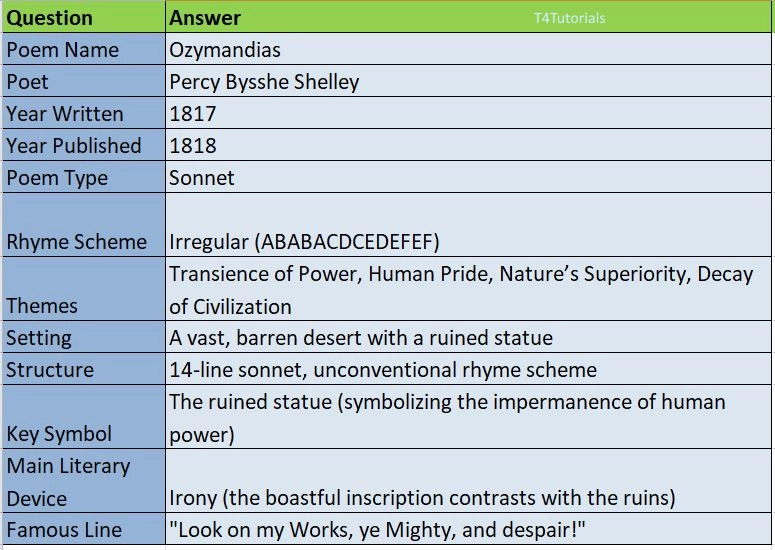Summary:
Ozymandias is a sonnet by Percy Bysshe Shelley that explores the fleeting nature of power and the inevitable decline of rulers and empires. The poem is structured as a story within a story, where a traveler recounts seeing the ruins of a massive statue in the desert. The inscription on the pedestal boasts of Ozymandias’ great power, yet ironically, nothing remains of his empire except broken remnants of the statue surrounded by endless sand. Shelley uses this imagery to highlight the theme of impermanence and the futility of human pride, emphasizing that no matter how powerful a ruler may be, time ultimately erases all traces of their greatness. The poem serves as a powerful reflection on the transient nature of human achievements and the dominance of nature over human civilization.

Score: 0
Attempted: 0/10
Subscribe
| Question | Answer |
| Poem Name | Ozymandias |
| Poet | Percy Bysshe Shelley |
| Year Written | 1817 |
| Year Published | 1818 |
| Poem Type | Sonnet |
| Rhyme Scheme | Irregular (ABABACDCEDEFEF) |
| Themes | Transience of Power, Human Pride, Nature’s Superiority, Decay of Civilization |
| Setting | A vast, barren desert with a ruined statue |
| Structure | 14-line sonnet, unconventional rhyme scheme |
| Key Symbol | The ruined statue (symbolizing the impermanence of human power) |
| Main Literary Device | Irony (the boastful inscription contrasts with the ruins) |
| Famous Line | “Look on my Works, ye Mighty, and despair!” |